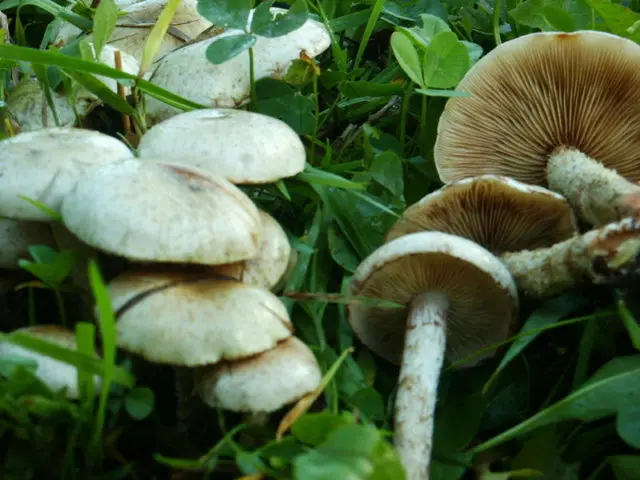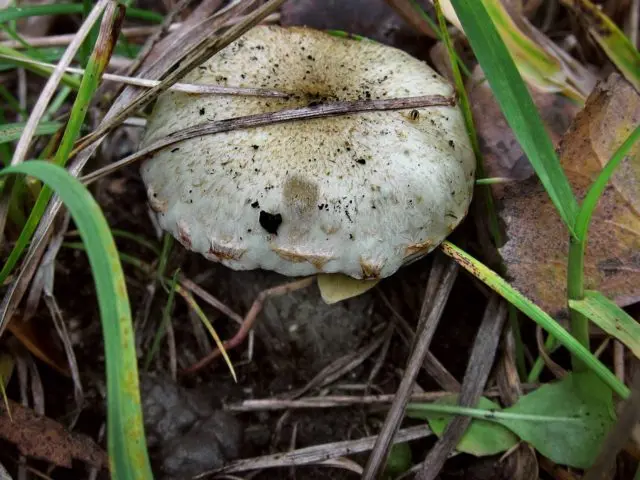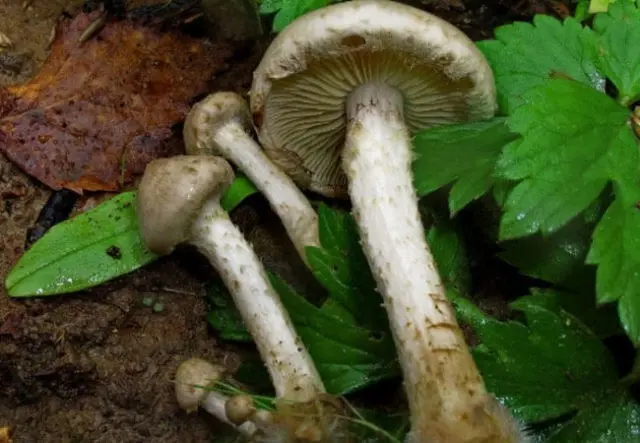Contents
Flake yellow-greenish (lat. Pholiota gummosa) from the genus foliate, it belongs to the strophariaceae family. It is well distributed on the territory of Our Country and has other names (gum-bearing and yellow-green), but few people know and collect it.

What does the yellow-green flake look like
This type of flake got its name due to its color. It has good recognizability, which makes it easy to collect.
Cap Description
The color and shape of the cap scaly changes depending on age. In a young gum-bearing flake, it looks like a light yellow bell with inconspicuous scales that gradually grow.

In a grown specimen, an open disk with a tubercle in the middle is observed, a greenish tint also appears, darker towards the center. The diameter varies when ripe from 3 to 6 cm. Barely noticeable light fragments of the bedspread remain on the curved edges of the cap. The surface becomes smooth and the skin becomes sticky.
The hymenaphorus consists of often located and adherent plates with a cream, sometimes ocher color. The greenish tint is preserved. The yellowish flesh has no taste or smell.
Description of the leg
A very dense leg of a yellow-greenish scaly in the form of a cylinder with a diameter not exceeding 1 cm. The length varies from 3 to 8 cm. Almost all of it has a yellow-green color with a darkening to the base, where the shade is closer to rusty brown.

Near the hat there is a ring from a private bedspread, but it is weakly expressed and almost imperceptible. The leg is almost entirely covered with felt scales. Only the top is smooth and fibrous.
Is the mushroom edible or not?
Unlike their relatives, most of which are inedible, yellow-green flakes are conditionally allowed for cooking some dishes. But often they are afraid to collect it, since many do not know this. It is part of the second courses fresh, but only after boiling. The remaining broth is not suitable for food.
Some housewives make pickles from this species.
Dried specimens are used only by healers and in pharmacology.
Where and how to grow
From mid-August to mid-autumn, the gum-bearing flake is in active growth. Mature mushrooms are more often found in mixed and deciduous forests in groups near or on old stumps.
The distribution area is extensive. This variety can be found in the temperate zone of the northern hemisphere, in central Our Country.
Twins and their differences
Representatives of the genus foliot have a clear similarity, but the yellow-green scale has no twins.
Conclusion
Flake yellow-greenish is a little-known mushroom in Our Country, which is grown in Japan and China for sale on plantations. Knowledgeable lovers of “silent hunting” compare it with honey mushrooms.









